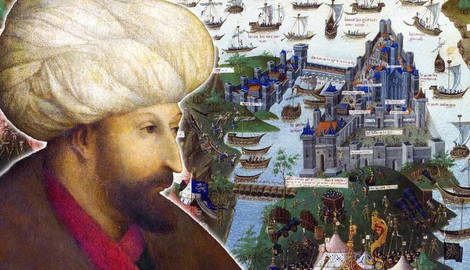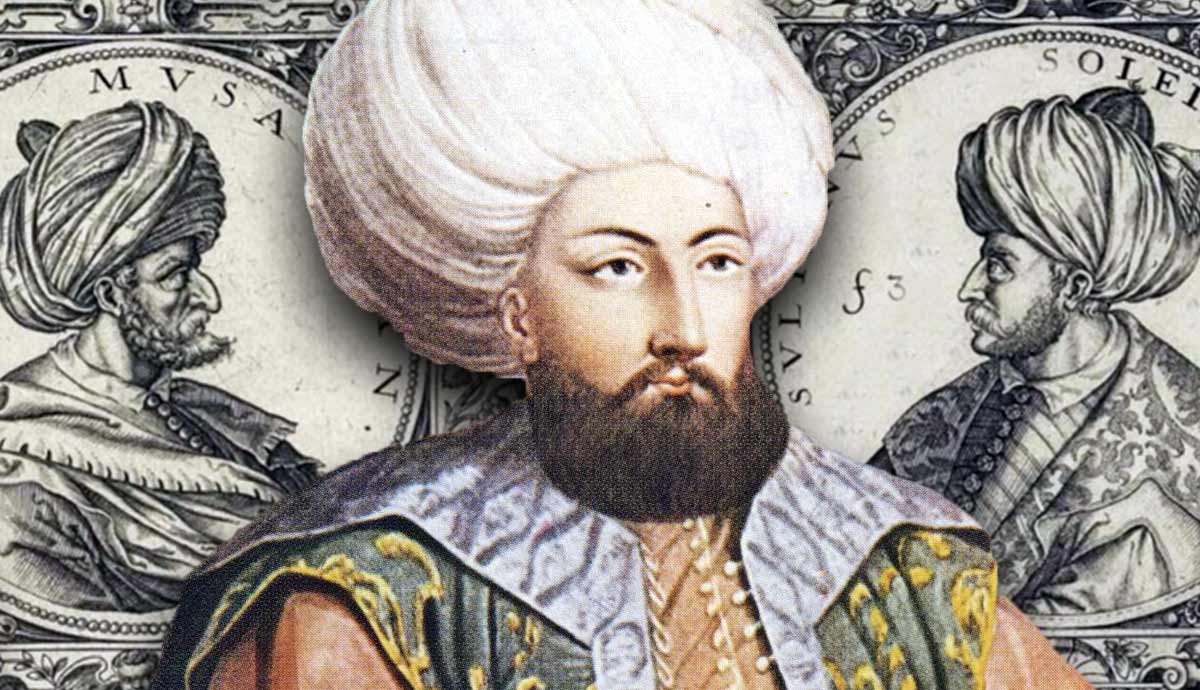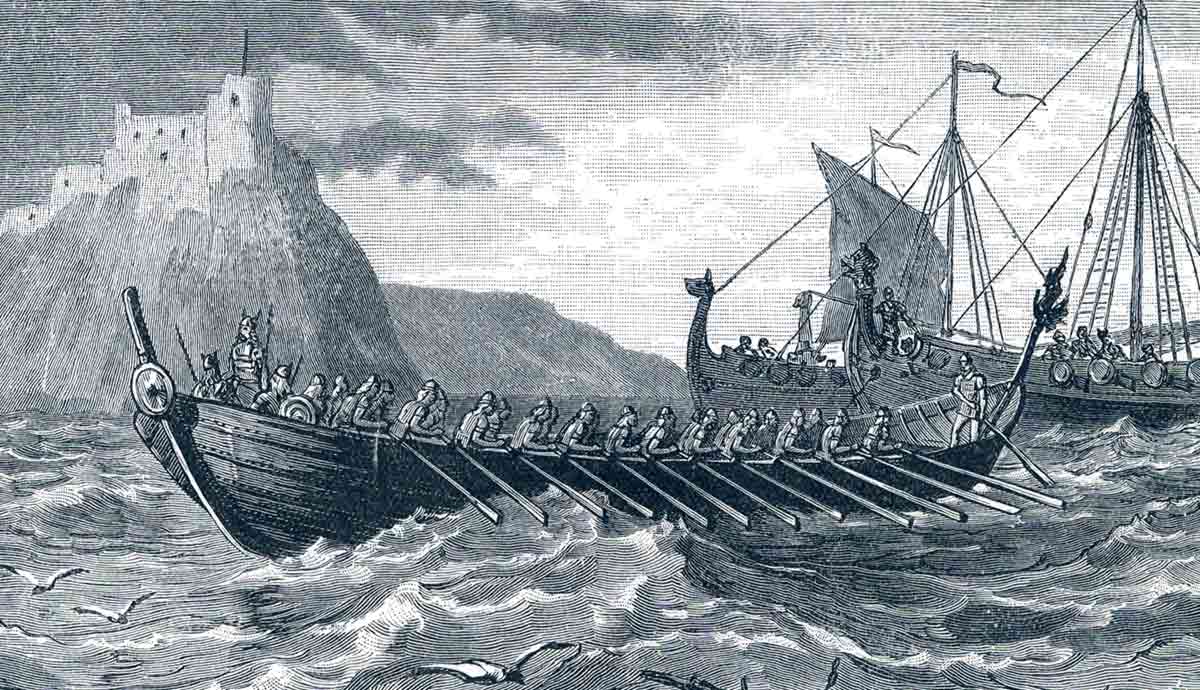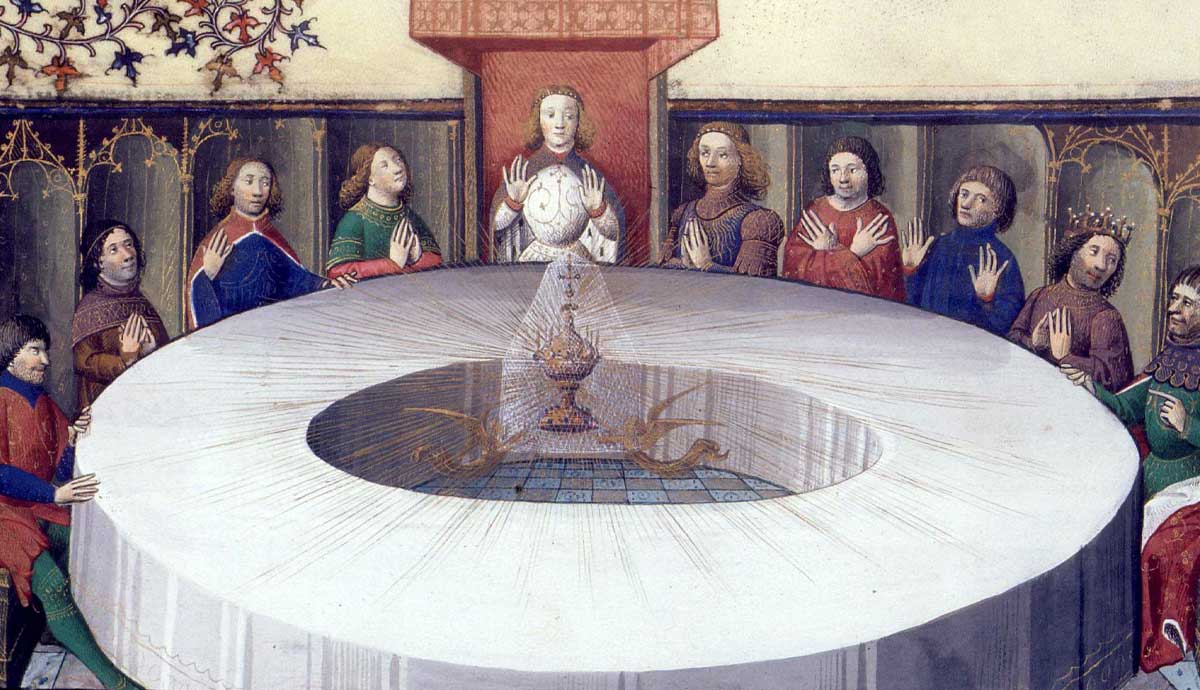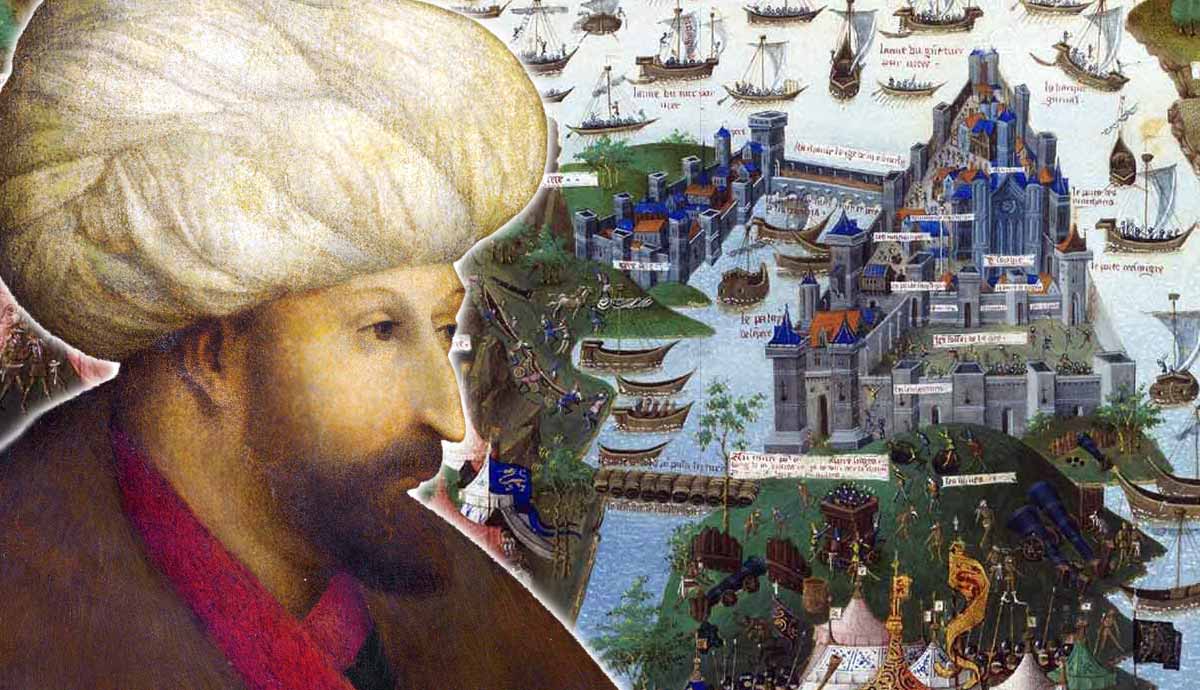
Mehmed II (the Conqueror) transformed the Ottoman state into a centralized and bureaucratized empire. Like other rulers of his time, he was devout and believed in his right to rule with an iron fist. Yet, he was also a Renaissance prince at heart. Inspired by classical learning, Mehmed patronized artists and scientists in distant lands.
The Young Prince

Mehmed was born in Edirne around 1432 to Sultan Murad II and his concubine Hüma Hatun. Hüma is believed to have been Greek or Serbian, and likely died while Mehmed was still a teenager. As a result, the young prince was raised by his father’s wife, Mara Branković, who also happened to be the daughter of Serbian Despot Durad Branković.
Mehmed was an inquisitive and proud boy who had a passion for military science and history. Despite his intelligence, shown by the fact that he learnt seven languages, Mehmed often misbehaved during his lessons. Because of this, he was caned by his tutors, who instilled a strict sense of discipline in the young prince.
As a child, Mehmed learned about the great military conquests of his ancestors, other Turkish dynasties like the Seljuks, and even other civilizations in history. He idolized Alexander the Great (d. 323 BCE), the ancient Macedonian Greek general who had conquered most of the known world by the age of 32. The stories of these heroes and generals left a lasting impact on Mehmed, who vowed to have his name printed in the history books.
At around age eleven, Mehmed, his mother, and two advisors were sent to the city of Amasya, where, in the Ottoman tradition, he trained to become an effective ruler.
First and Second Reign

In 1444-46, Sultan Murad II (d. 1451) decided to abdicate the throne and retire to a life of semi-solitude. The death of his favorite son, Alaeddin, in 1443, took a huge toll on the Sultan, who left the throne to his eldest surviving son, Mehmed. At twelve years old, Mehmed was the youngest prince to become sultan in Ottoman history.
The ambitious Mehmed revelled in his new role. Murad’s viziers, however, were not pleased that the older and more experienced ruler had left the empire to a teenage boy, especially during a chaotic period. In the 1440s, the Ottomans were threatened by a crusade and rebellions in the Balkan provinces under the Albanian leader, Skanderbeg. On the borders of Hungary, military commander John Hunyadi had also halted three Ottoman campaigns into Europe.
The viziers pressured Murad into returning and Mehmed into asking his father to take back his role as Sultan. Murad was thus restored as Sultan in 1446. Mehmed resented this and never forgot those who pressured him into abdicating. As was the Ottoman custom, Mehmed was sent to a “sancak,” a province in Anatolia that he would govern.
He governed the city of Manisa for the next five years, earning the respect of the populace.
However, his headstrong behavior, such as raiding Venetian territories without his father’s permission, further damaged the relationship between Murad and Mehmed. In 1451, the former died, leaving a vast empire to the 19-year-old Mehmed.
Constantinople: Mehmed’s Obsession

It was Constantinople, the capital of the Byzantine Empire, that was Mehmed’s lifelong obsession. The conquest of Constantinople had been a major goal for other Islamic rulers. The Prophet Muhammad (d. 637) prophesied that Constantinople would be conquered by a great conqueror and army. Throughout history, Islamic armies, including the Abbasids (ca. 782) and Mehmed’s own great-grandfather, Sultan Bayezid I (d. 1402), had tried unsuccessfully to fulfill this prophecy.
The conquest of Constantinople would subjugate the Byzantines and allow the Ottomans to control a strategically and culturally important city. On April 6, 1453, at the age of 21, Mehmed prepared his army for a 55-day siege of the city. The Ottoman army’s effective use of firearms, including one of the largest cannons in existence, allowed them to breach the protective Theodosian Walls, which were around four meters (13 feet) thick.
On May 29, 1453, Mehmed’s army finally breached the barricades and conquered the city.
After the customary looting of the city by his warriors, Mehmed set about to make Constantinople the cultural, economic, and political center of his empire. He began by turning the Hagia Sophia, a monumental Byzantine church, into a mosque, albeit preserving the Christian iconography inside. In the Sultan’s mind, he had just inherited a Roman city, and he intended to honor it.
A Renaissance Prince

Mehmed was unlike his forefathers in that he closely followed socio-political developments in Western Europe. He patronized Italian artists, such as Gentile Bellini, who spent 15 months in Constantinople and painted the Sultan’s portrait.
Italian scholars, particularly those espousing humanistic views, attended his court. The cosmopolitanism of Mehmed’s court starkly contrasted against that of his father, Murad, whose reign had seen the rise of “Oghuzism,” or an interest in Oghuz Turkic tradition and literature.
Mehmed had a multilingual library containing the works of ancient Greek philosophers and Stoics. Books in Latin, Greek, Hebrew, Arabic, Persian, and Chagatai Turkic were all patronized and read by the Sultan. In fact, his daily schedule included being tutored by a Greek and Latin-speaking physician and an Arabic-speaking philosopher.
Mehmed had a passion for classical antiquities, many of which were dotted around Anatolia and Greece. After the conquest of Athens, he requested a personalized tour of the city’s monuments. He particularly admired the Acropolis and Parthenon.
Science, astronomy, and medicine were also advanced due to Mehmed’s patronage. In 1470, the Timurid polymath Ali Qushji was sent by Akkoyunlu ruler Uzun Hasan to Mehmed’s court. There, he composed astronomical and mathematical manuscripts and eventually became an instructor at the medrese (theological schools).
Mehmed’s Rivalries

During the 15th century, the Ottomans faced serious threats to their supremacy in Eurasia. In the east, dynasties like the Timurids and Akkoyunlu posed themselves as the true leaders of the Islamic world. In the west, Wallachia (present-day Romania) and Hungary, states that were under Ottoman suzerainty, began to rebel against their overlords.
The Akkoyunlu were a Turkic tribal confederation that shared similar nomadic roots to the Ottomans. As they expanded their empire in the 15th century, the Akkoyunlu encountered the Ottomans, with whom they were on relatively good terms. However, Mehmed’s annexation of Trebizond, a province ruled by the Byzantine Komnenos Dynasty, changed this.
Uzun Hasan’s wife, Despina Hatun, was the daughter of the Tebizondian emperor John IV (d. 1460). Trebizond was considered by the Akkoyunlu to be part of her dowry, and therefore, an Akkoyunlu possession. After several insulting letters and unsuccessful mediation attempts, Uzun Hasan and Mehmed met on the battlefield. At the Battle of Otlukbeli (1473), Mehmed’s superior army devastated the Akkoyunlu, who would never fully recover from their losses.
Mehmed also faced trouble in the west. In 1448, the young Wallachian Voivode (ruler) Vlad Tepes—also known as Vlad the Impaler—refused to pay the jizye tax demanded by the Ottomans. His insubordination and support for Pope Pius II’s proposed crusade against the Ottomans further destroyed relations between Mehmed and Vlad.
The final straw was Vlad’s massacre of 23,000 Turks in Bulgaria in 1462. The Sultan personally amassed an army of 150,000 to invade Vlad’s territory. After a month of bitter warfare, the Ottomans reigned supreme. Vlad fled to the Carpathian Mountains and was subsequently imprisoned by Matthias Corvinus, the King of Hungary and Croatia.
Impact on the Ottoman State

Mehmed’s rule saw the Ottoman Empire adopt many elements of Byzantine culture, such as royal seclusion and independent authority of the ruler. While previous Ottoman sultans were more open to public appearances and meetings, Mehmed preferred a stricter separation of royals and commoners. His new palace in Istanbul, called Topkapi, was a more secluded and fortified structure than previous Ottoman palaces.
He was also instrumental in the centralization and bureaucratization of the empire. Mehmed’s kanunname, or law codes, were the first to set out the roles, responsibilities, and salaries of government ministers. They also codified secular law for crime and punishment that was separate from religious law (shariah).
While the ghazi, or holy warrior, was the pre-eminent persona that previous Ottoman sultans had adopted, Mehmed fashioned himself as an emperor in the Islamic, Roman, and Byzantine traditions. The ghazi warrior class, which was instrumental in conquests and raids, lost its esteemed position. In its place, the devshirme, or enslaved Christian from the Balkans, rose to the highest ranks in the empire.
Death and Legacy

Mehmed’s military campaigning continued throughout his reign. After conquering Balkan states like Bosnia (1463) and Albania (1478), Mehmed set his sights on Italy. In 1480, a campaign in Italy successfully led to the capture of Otranto. Yet, his sudden illness—likely linked to gout—in the spring of 1481 put a halt to these dreams.
The conqueror died soon after, unable to realize his goals of conquering Rome, the eternal city. His death caused chaos in Constantinople, where janissaries revolted until a prince could secure the throne. Amidst the commotion, Mehmed’s stinking corpse was left in a room and was only buried after his son Bayezid reached the capital.
To this day, Mehmed remains a divisive figure in history. Although he may be considered a “renaissance prince,” his conquests in Europe, particularly in the Balkans, are not remembered fondly. In Turkey, however, Mehmed is a revered figure, almost always referred to by his moniker “Fatih,” meaning “the Conqueror.” The Fatih district in Istanbul, along with structures such as bridges and mosques, are named after him.
